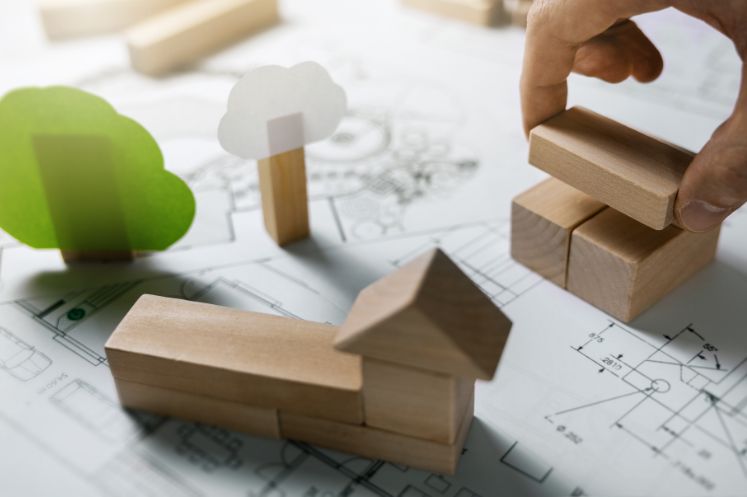Sustainable architecture is an approach to design and construction that seeks to minimise the environmental impact of buildings and maximise their energy efficiency. This concept is increasingly present in today’s society, where concerns about climate change and the use of natural resources have intensified. In this article, we will explore the fundamental principles of sustainable architecture, how it is implemented in residential and public projects, and the benefits it brings to both the environment and the buildings’ inhabitants.
What defines sustainable architecture?
Sustainable architecture is based on a set of principles that aim to reduce the environmental impact throughout the building’s life cycle, from construction to demolition or reuse. This includes the use of recycled materials, energy efficiency and the reduction of carbon emissions.
Energy efficiency
One of the pillars of sustainable architecture is energy efficiency. An energy efficient building uses less energy for heating, cooling and lighting. This is achieved through the design of passive systems, such as strategic orientation of the building to take advantage of sunlight, and the use of active technologies, such as solar panels and heat pumps.
Contact our architectural firm
Benefits of sustainable architecture
Sustainable architecture not only benefits the environment, but also brings long-term economic and social advantages. The initial investment may be higher, but the benefits accrued over time outweigh these additional costs.
Environmental benefits
The positive impact on the environment is indisputable. By using environmentally friendly materials and optimising energy use, sustainable buildings help reduce greenhouse gas emissions and contribute to mitigating climate change.
Fundamental principles of sustainable architecture
There are several key principles that guide the implementation of sustainable architecture, from the initial design planning to the final construction phase.
Bioclimatic design
Bioclimatic design is a strategy that takes into account local climatic conditions to reduce the need for artificial heating and cooling systems. By designing a building to take advantage of sunlight and natural ventilation, energy consumption is minimised.
Examples of sustainable architecture in residential and public projects
Sustainable architecture can be applied in various types of projects, from private homes to public buildings. A key example is the integration of green spaces, solar energy systems and advanced thermal insulation.
Sustainable residential projects
In housing design, sustainability can be reflected in the use of local and renewable materials, the optimisation of orientation to take advantage of sunlight, and the incorporation of energy efficient systems such as solar panels. In residential projects by Vello Monfort Arquitectes, these principles are applied to ensure that homes are efficient and aligned with the needs of their users and the environment.
The role of regulation in sustainable architecture
In Spain, there are specific regulations that encourage the implementation of sustainable practices in building construction. It is essential to be aware of these regulations to ensure that architectural projects comply with legal and environmental requirements.
European and Spanish legislation
European legislation has set clear targets for reducing carbon emissions in buildings through Directive 2010/31/EU on the energy performance of buildings. In Spain, the Technical Building Code (CTE) establishes parameters related to energy efficiency, indoor air quality and the reduction of the environmental impact of the materials used in construction.


